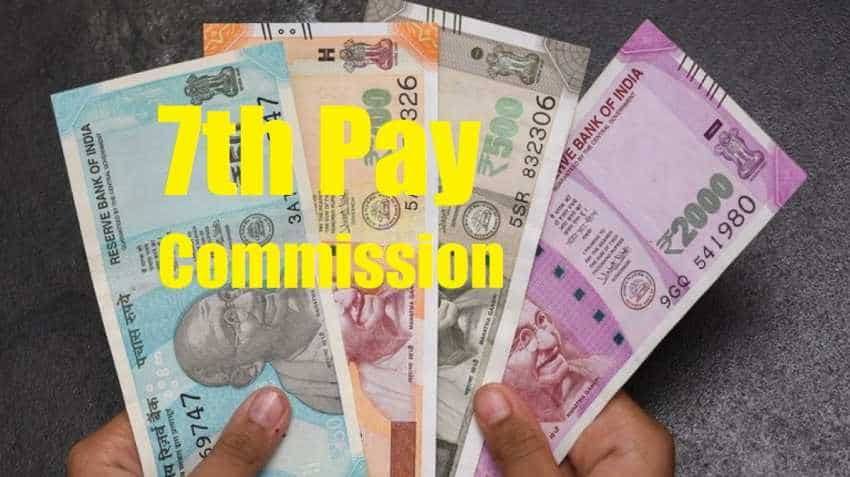7th Pay Commission: How dearness allowance protects real pay of central government employees
7th Pay Commission: The central as well as several state governments have recently announced Dearness Allowance hikes for their respective employees.

7th Pay Commission: The central as well as several state governments have recently announced Dearness Allowance hikes for their respective employees. In the most recent instance, the Uttar Pradesh government has announced the DA hike. "According to this order, the payment of the due Dearness Allowance for the period of January 1, 2019 to February 28, 2019 will be done in cash as soon as possible in this Financial Year only. The DA for the month of March will be paid along with the salary in the month of April," said an official notification of Uttar Pradesh government dated March 20.
7th Pay Commission: Why DA is paid to government employees
As per the official 7th Pay Commission report, "The Dearness Allowance (DA) is paid to Central Government employees to adjust the cost of living and to protect their Basic Pay from erosion in the real value on account of inflation." Currently, the DA is based on the All India Consumer Price Index (Industrial Workers). While finalising the 7th Pay Commission report, the panel had discussed in details several allowances to be paid to the employees. The pay panel had covered up to 52 allowances granted by the government, including the DA.
7th Pay Commission: How DA protects real pay of central government employees
The panel had noted that DA helps in protecting the "real pay" of central government employees. The commission said, "The real pay in government is protected by providing Dearness Allowance (DA)".
DA is that percentage of central government employees' pay by which the CPI (IW) 16 increases over a fixed base value, it said while adding that the absolute amount of DA keeps on growing with every point increase in CPI (IW).
ALSO READ | 7th Pay Commission: How central government employees' minimum wage was determined
Hence, DA protects the employees from providing a cover against price rise.
Besides, there is also a provision of Variable Dearness Allowance (VDA) to protect the real value of the industrial minimum wage. VDA is "a fixed amount of money given per point increase in CPI (IW) as notified by the Chief Labour Commissioner (central sphere) from time to time," the panel said.
The 7th Pay Commission report said, "...over a period of time, the minimum pay + DA in government becomes larger than the minimum wage + VDA in the private sector even though the basic minimum wage in both the sectors is calculated on the basis of the 15th ILC norms. As on 01.01.2015 the minimum pay in government was ₹14,910 whereas minimum wage for a skilled worker was in the range of ₹9,000–₹11,000 per month."
Watch this Zee Business news
#Equity में निवेश से जुड़ी हर जरूरी बात, बाजार में निवेश से जुड़े आपके हर सवाल..@SEBI_India, Exchange और बाजार के एक ही मंच पर मिलेगा जवाब, #NiveshGurukul में 23 मार्च को आप के शहर #Indore में ।
रजिस्ट्रेशन के लिए: SMS <GURUKUL> TO 57575@AnilSinghviZEE @MSE_Exchange pic.twitter.com/uKHFqvpJRd
— Zee Business (@ZeeBusiness) March 22, 2019
The government also provides other allowances such as house rent, transport, location and function specific allowances besides Leave Travel Allowance (LTA) which, along with the basic pay. These all constitute the gross pay of a government employee.
11:23 AM IST






 7th Pay Commission Sarkari jobs: Bumper Rs 5,500 monthly salary hike for these employees; Level-9 grade pay after promotion
7th Pay Commission Sarkari jobs: Bumper Rs 5,500 monthly salary hike for these employees; Level-9 grade pay after promotion 7th Pay Commission Latest News: Sarkari jobs at FSI; 13 posts announced with attractive pay as per 7th CPC
7th Pay Commission Latest News: Sarkari jobs at FSI; 13 posts announced with attractive pay as per 7th CPC  7th Pay Commission: Big Coronavirus relief for these Central Government Employees on availing leave
7th Pay Commission: Big Coronavirus relief for these Central Government Employees on availing leave 7th Pay Commission latest news: UPSC notifies 7th CPC Group 'A' Gazetted Officer's job; Rs 56,100 starting salary for this sarkari naukri
7th Pay Commission latest news: UPSC notifies 7th CPC Group 'A' Gazetted Officer's job; Rs 56,100 starting salary for this sarkari naukri 7th Pay Commission Latest News: Sarkari jobs available at this research organisation; attractive pay as per 7th CPC
7th Pay Commission Latest News: Sarkari jobs available at this research organisation; attractive pay as per 7th CPC